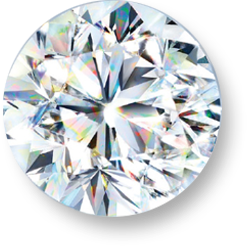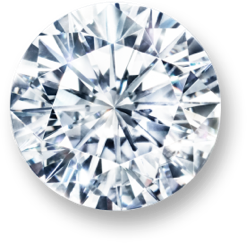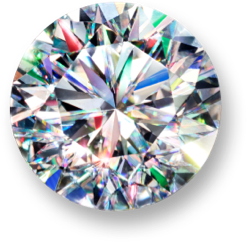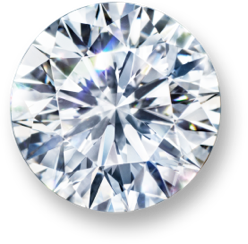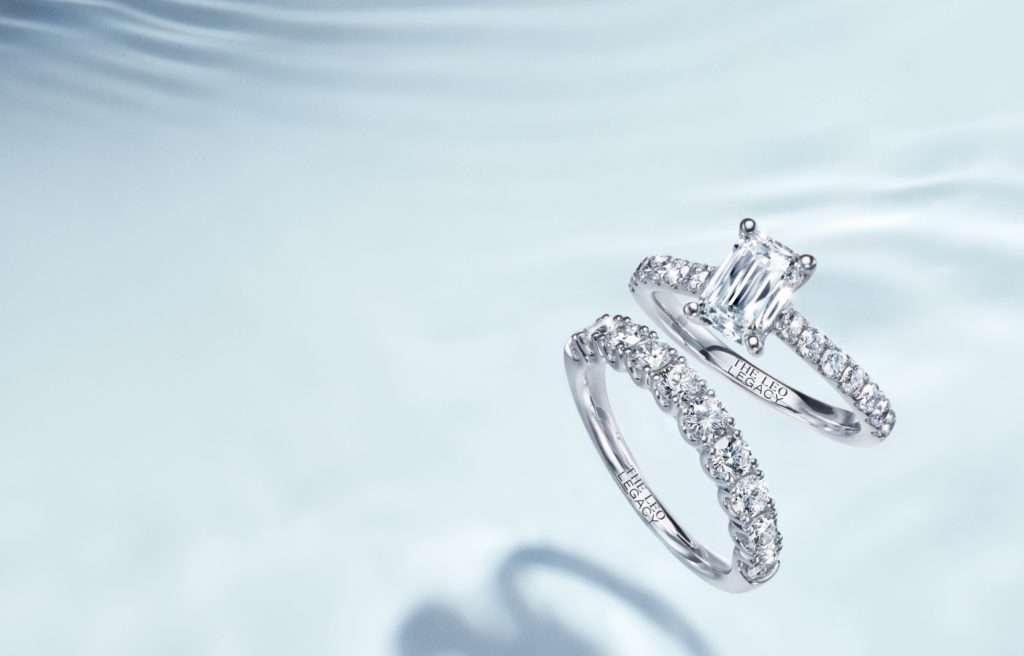Learning about diamonds and what makes them beautiful begins with understanding the 4Cs – the characteristics of a diamond. The 4Cs stand for cut, carat weight, color and clarity. Learning about them now will make your purchasing experience easier, more enjoyable, and far more rewarding. You will know the exact quality of the diamond you’re considering, and feel confident that you’re paying a fair market price for it.
Many diamonds sold by reputable jewelers have been graded according to the 4Cs and come with written diamond certification. The grading gives you an objective way to compare the quality and price of one diamond with another. A larger diamond – one with greater carat weight – may actually be lower in price than a smaller one because its cut, color and clarity are of lesser quality. Each of the 4Cs must be taken into account to determine the value.
Cut
People often refer to a diamond’s shape as the cut (round cut, princess cut, emerald cut). But, technically, cut is the craftsmanship applied in cutting, placing and polishing the facets of the diamond. A well-cut diamond – regardless of its shape – appears more alive with brilliance, catching the light and sparkling brightly as you move your hand. If a diamond is cut poorly, it will lack fire, sparkle and brilliance no matter what its size, color and clarity may be. That’s why it’s the most important of the 4Cs.
When a diamond is cut to the correct proportions, light enters through the diamond, passes from one facet to another, and then reflects back out through the top of the diamond. If a diamond is cut too deep, some light escapes through the sides of the diamond, losing brilliance. If the diamond is cut too shallow, too much light escapes through the bottom of the diamond before it can be reflected. In addition, the facets must be placed with optimal symmetry for maximum brilliance. The work requires the experience and skill of master diamond artisans. It is the placement of facets, which affects a diamond’s brilliance.
The art of diamond cutting has evolved thanks to state-of-the-art technology and innovation. And, the diamond artisans at Leo Schachter have led the charge with patented diamond cutting technology. Like, the additional strategically placed facets in The LEO Legacy® Lab-Created Diamond and The LEO® Diamond, the first diamond independently certified to be visibly brighter or The LEO First Light® Diamond, with it’s brilliant burst of color and sparkle. And, The LEO® Ideal Cut Diamond, a diamond cut to geometrically ideal proportions that create breathtaking fire, sparkle and brilliance.
Carat
A diamond’s size is measured in carat weight. Each diamond carat is equal to 100 points. For example, a diamond that is a 1/2 carat can also be referred to as a 50-point diamond. But keep this in mind: a bigger diamond isn’t necessarily a more beautiful diamond. A two-carat diamond that is cut poorly is not nearly as beautiful as a smaller diamond, cut by a skilled diamond artisan. Or, it may be cut well, but have poor color and clarity. To be exceptionally beautiful, a diamond must be of high quality in all 4Cs.
Please note: Monitors can vary considerably and carat weight examples are meant only as an educational guide.
Color
Color actually refers to the colorlessness present in a diamond. It is determined completely by nature. From a traditional standpoint, the closer a white diamond is to being colorless, the more valuable and beautiful it is. Diamond colors appear in a range from D to Z. Fine diamonds fall into the range from color grade D to I. Color grades D, E and F are considered colorless, making them rare.
Clarity
Clarity is an indication of a diamond’s purity. When a rough diamond is extracted from carbon, deep beneath the earth, tiny traces of natural elements are almost always trapped inside. These elements are called inclusions, though sometimes referred to as birthmarks because they are formed naturally and are unique to each diamond.
Because most inclusions are not visible to the naked eye, a jeweler will use a magnifier known as a loupe to reveal a diamond’s inclusions. The fewer and smaller the inclusions, the greater the clarity and higher the value of the diamond.
